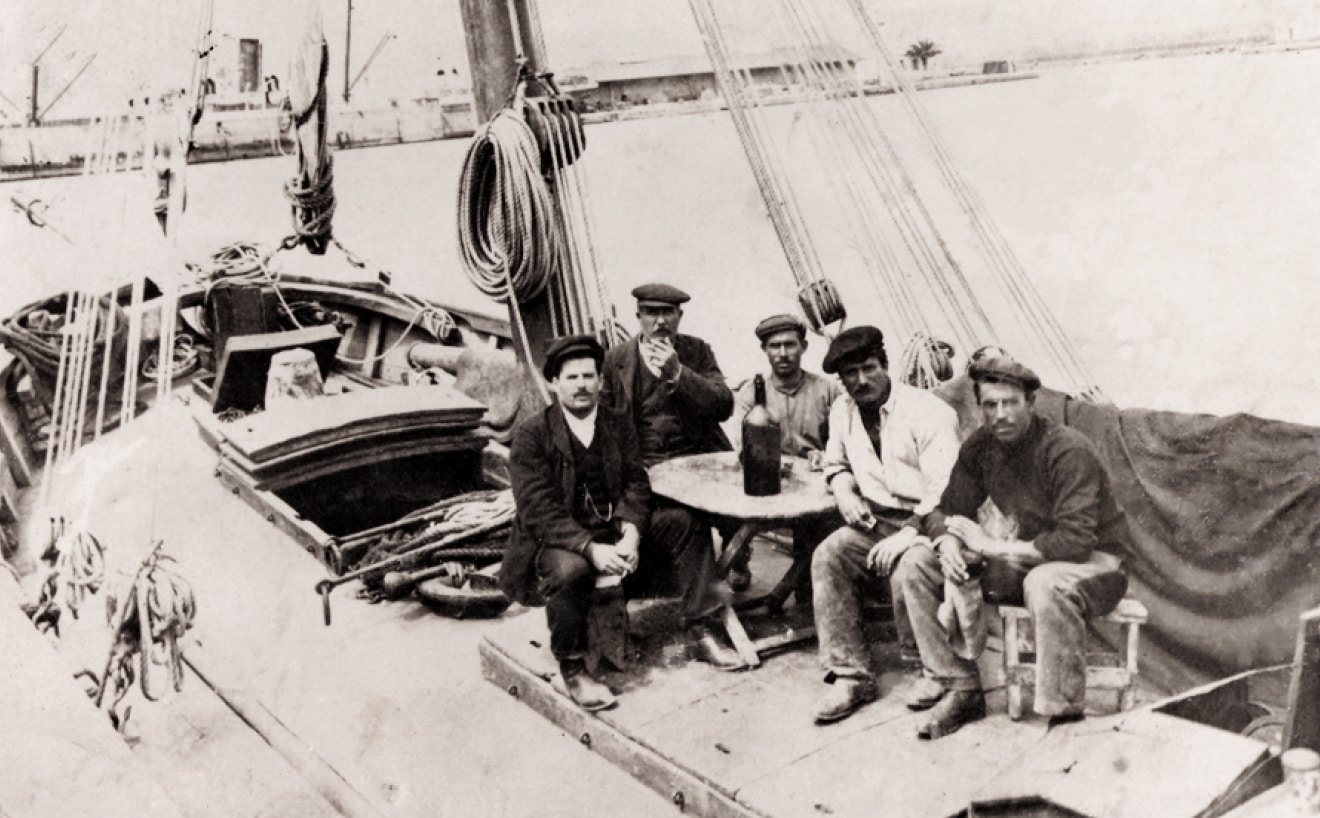by Nicolo Capriata
The Galanzieri were Carloforte sailors who, at the beginning of the 20th century, transported by sea the lead mineral galena or galanza, which they loaded from the nearby mines of Sulcis Iglesiente – Nebida, Masua, Funtanamare, Piscinas, Buggerru and Cala Domestica – to the port of Carloforte, where it was stored while waiting to be loaded onto ships bound for the Peninsula.
At the beginning of the 20th century, the development of the mining industries of Sulcis Iglesiente had made Carloforte the second most important port in Sardinia, in terms of number of ships and quantity of goods transported, contributing to the social and economic development of the town.
The Galanzieri were men of great strength and determination. The distance to be covered could be from 6 to 40 miles, round trip, in all wind and sea conditions, often by rowing when the wind did not allow sailing.
The ore, in sacks of up to 50 kg each, was loaded on the shoulders, in uncomfortable conditions, taking on board as many goods as possible, because you were paid according to how much galena you unloaded at your destination, risking sinking and losing not only your precious cargo, but your life itself.
Many did not return home. There were no forms of protection, the pay was low and the work dangerous. Protests soon took hold. At the end of the 19th century, thanks to the initiative of Giuseppe Cavallera, they found a way to organise themselves and support their ideas. It was Cavallera who brought them together in the ‘Lega dei Battellieri’, the first example of a trade union organisation.


